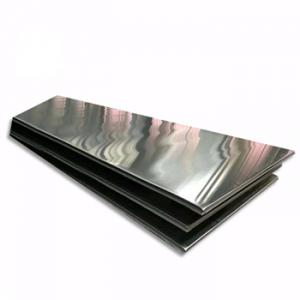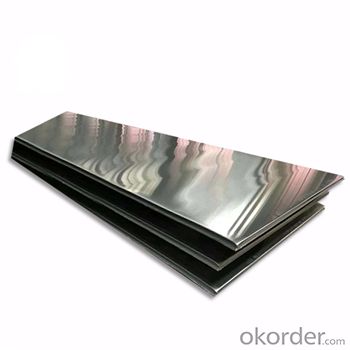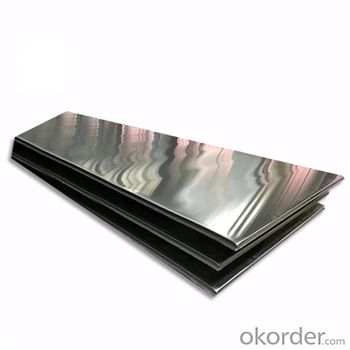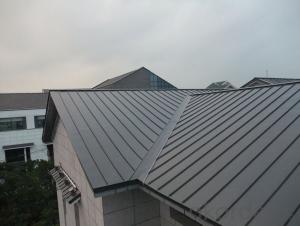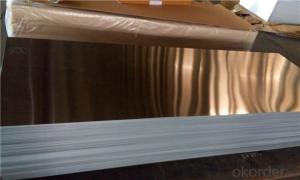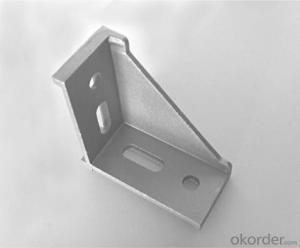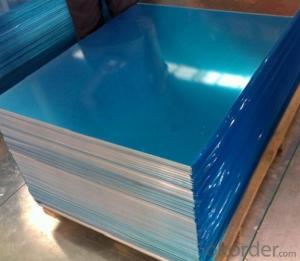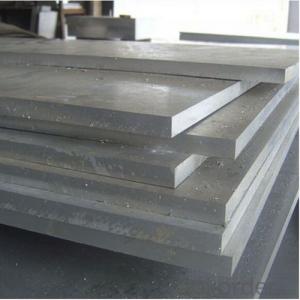6000-Series Aluminum 6063 T6 Temper Aluminum Sheets for Roof
- Loading Port:
- Shanghai
- Payment Terms:
- TT or LC
- Min Order Qty:
- 6 m.t.
- Supply Capability:
- 3000 m.t./month
OKorder Service Pledge
OKorder Financial Service
You Might Also Like
Alumimun sheets
1. Aluminum sheet Alloy 1050, 1060, 1100, 1200, 3003,3004,3005,3105,3104,5005,5052,5754.
2: Aluminum sheet surface: mill finish, bright finish embossed with five bar, stucco, diamond patterns.
Product name | Factory price 6000-series aluminum 6063 T6 temper aluminum sheet & plate |
Material | 1050, 1060, 1100, 1200, 3003,3004,3005,3105,3104,5005,5052,5754.6061. |
Tempers | O, H14, H16, H18,H22, H24, T4, T6, F, H112 |
Surface treatment | Mill Finish,Anodized,Eletropharesis,Powder Coated, Wooden Finish, Polish |
Color | Silver,Black,Red,Blue,or as required |
Shape | Plainen,bossed,or as per the drawings and samples |
Fabrication | cutting,drilling,punching,bending,etc |
Application | Decorations, aviation, marine, electric productions, trailer, machinery, construction. etc |
Standard | China Nation Standard GB 3880-2006, ASTM, EN |
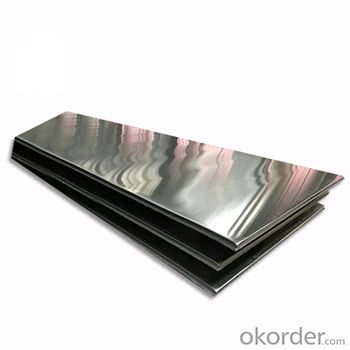
Why we choose Okorder.com?
Okorder.com is a professional and reliable online E-market place
Providing a variety of products with reasonable prices
High quality goods provided by factory suppliers
Shipping to over 200 countries.
One-stop sourcing
Dubai Logistic Complex
Okorder Quality Control?
We hold a very strict quality control system to check every connector of our products for your safety.
Okorder services for you
1.7*24 hours Hotline & Email Service
2. Your inquiry related to our products or prices will be replied in 24hrs.
3. Well-trained and experienced staffs to answer all your enquires in fluent English
4. OEM&ODM, any your customized demand we can help you to design and put into product.
5. Distributor ship are offered for your unique design and some our current models
- Q: Are aluminum sheets non-magnetic?
- No, aluminum sheets are not magnetic.
- Q: how to avoid oxidation of aluminum sheet after wire drawing?
- leave it alone after wire drawing!aluminum sheet will formulate a layer of dense oxide film. So you don't need to worry about it! Don't often polish the aluminum wire, or they will be more and more slimsy, the oxide film is used for avoiding reoxidation.
- Q: Do aluminum cans melt in typical campfires? I know the melting point is about 660 Celsius but do campfires get that high? I thought it would just be that the can becomes disfigured and collapses due to the heat, not due to it melting. Even if it did melt in the fire how would you find the remains? The can in a liquid form would certainly not be confined to one part of the fire and therefore wouldn't solidify in a small pool to see if it had melted or not. Any ideas?
- Campfires would not get that hot. However, even if they were hot enought, the aluminum in the can would not melt. It would oxidize before it had a chance to and turn into a white powder that migles among the ashes.
- Q: Is it possible to utilize aluminum sheets in a home renovation project?
- <p>Yes, you can use aluminum sheets for your home renovation project. Aluminum is a versatile material known for its strength, durability, and resistance to corrosion. It's commonly used for roofing, siding, and even for decorative purposes. Aluminum sheets are lightweight, easy to install, and can be painted or coated to match your home's aesthetic. They also offer good thermal performance and can be recycled, making them an environmentally friendly choice. However, it's important to consider the specific requirements of your project, such as the local climate, design preferences, and budget, to ensure aluminum is the best fit.</p>
- Q: Can aluminum sheets be used for insulation jackets?
- Yes, aluminum sheets can be used for insulation jackets. Aluminum has excellent thermal conductivity properties, which allows it to effectively reflect heat and prevent the transfer of thermal energy. This makes it an ideal material for insulation jackets, as it helps to maintain temperature control and minimize heat loss or gain. Additionally, aluminum sheets are lightweight, durable, and resistant to corrosion, making them a practical choice for insulation applications.
- Q: What are the different alloys used in aluminum sheets?
- There are several different alloys used in aluminum sheets, each with its own unique properties and characteristics. Some of the commonly used alloys are: 1. 1100: This alloy is known for its excellent corrosion resistance and high electrical conductivity. It is often used in applications requiring a high level of formability and weldability, such as food packaging and electrical conductors. 2. 3003: This alloy is widely used in various applications due to its good formability, moderate strength, and excellent corrosion resistance. It is commonly used in cooking utensils, chemical equipment, and general sheet metal work. 3. 5052: This alloy is known for its high strength and good corrosion resistance. It is often used in marine applications, as well as in aircraft fuel tanks and automotive parts. 4. 6061: This alloy is one of the most versatile and widely used aluminum alloys. It offers excellent corrosion resistance, good weldability, and moderate strength. It is commonly used in structural components, such as frames and railings, as well as in automotive parts and aerospace applications. 5. 7075: This alloy is known for its high strength-to-weight ratio and excellent fatigue resistance. It is often used in applications requiring extreme strength, such as aircraft and aerospace components, as well as in high-performance sporting goods. These are just a few examples of the many different alloys used in aluminum sheets. The choice of alloy depends on the specific application requirements, such as strength, corrosion resistance, formability, and weldability.
- Q: Are aluminum sheets recyclable?
- Yes, aluminum sheets are recyclable.
- Q: Can aluminum sheet be used for electronic components?
- Yes, aluminum sheet can be used for electronic components. Aluminum is a versatile material that offers several advantages for electronic applications. It is lightweight, has excellent thermal conductivity, and is resistant to corrosion. These properties make it suitable for a wide range of electronic components, such as heat sinks, enclosures, connectors, and printed circuit boards (PCBs). Aluminum sheets can be easily machined, formed, and welded, allowing for efficient manufacturing processes. Additionally, aluminum is a cost-effective material compared to alternatives like copper or steel. However, it is important to note that aluminum is not suitable for all electronic components, especially those that require high electrical conductivity or magnetic shielding.
- Q: why intact aluminum sheet stop quicker than pectinate one in the magnetic field?
- while swinging in the magnetic field, intact aluminum sheets will formulate inner eddy current,that is the annular induced current.eddy current will transform the mechanical energy into heat energy, which makes the aluminum sheet stop quickly.but pectinate aluminum sheet can't formulate intact eddy current, so intact aluminum sheet stop quicker than pectinate one.
- Q: How do aluminum sheets handle extreme temperatures?
- The exceptional ability of aluminum sheets to handle extreme temperatures is widely recognized. This is primarily due to their high thermal conductivity, which enables them to effectively dissipate heat. As a result, they are suitable for applications involving high temperatures. Aluminum, with a melting point of 660 degrees Celsius (1220 degrees Fahrenheit), can withstand a wide range of extreme temperatures without compromising its structural integrity. When exposed to intense heat, aluminum sheets do not easily deform or warp. Consequently, they are ideal for use in environments with high temperatures, such as industrial furnaces, automotive engines, and aerospace applications. Furthermore, aluminum has a low coefficient of thermal expansion, meaning it expands and contracts minimally when subjected to temperature variations. This significantly reduces the risk of cracking or structural damage. On the contrary, aluminum also performs exceptionally well in extremely cold temperatures. It remains durable and retains its strength even in freezing conditions. This makes aluminum sheets suitable for cryogenic applications, including the construction of liquid natural gas tanks or aerospace components that operate in low-temperature environments. In conclusion, aluminum sheets excel in handling extreme temperatures due to their high thermal conductivity, low coefficient of thermal expansion, and excellent structural integrity. Whether subjected to intense heat or extreme cold, aluminum sheets remain stable and reliable, making them the preferred choice in various industries.
Send your message to us
6000-Series Aluminum 6063 T6 Temper Aluminum Sheets for Roof
- Loading Port:
- Shanghai
- Payment Terms:
- TT or LC
- Min Order Qty:
- 6 m.t.
- Supply Capability:
- 3000 m.t./month
OKorder Service Pledge
OKorder Financial Service
Similar products
Hot products
Hot Searches
Related keywords
